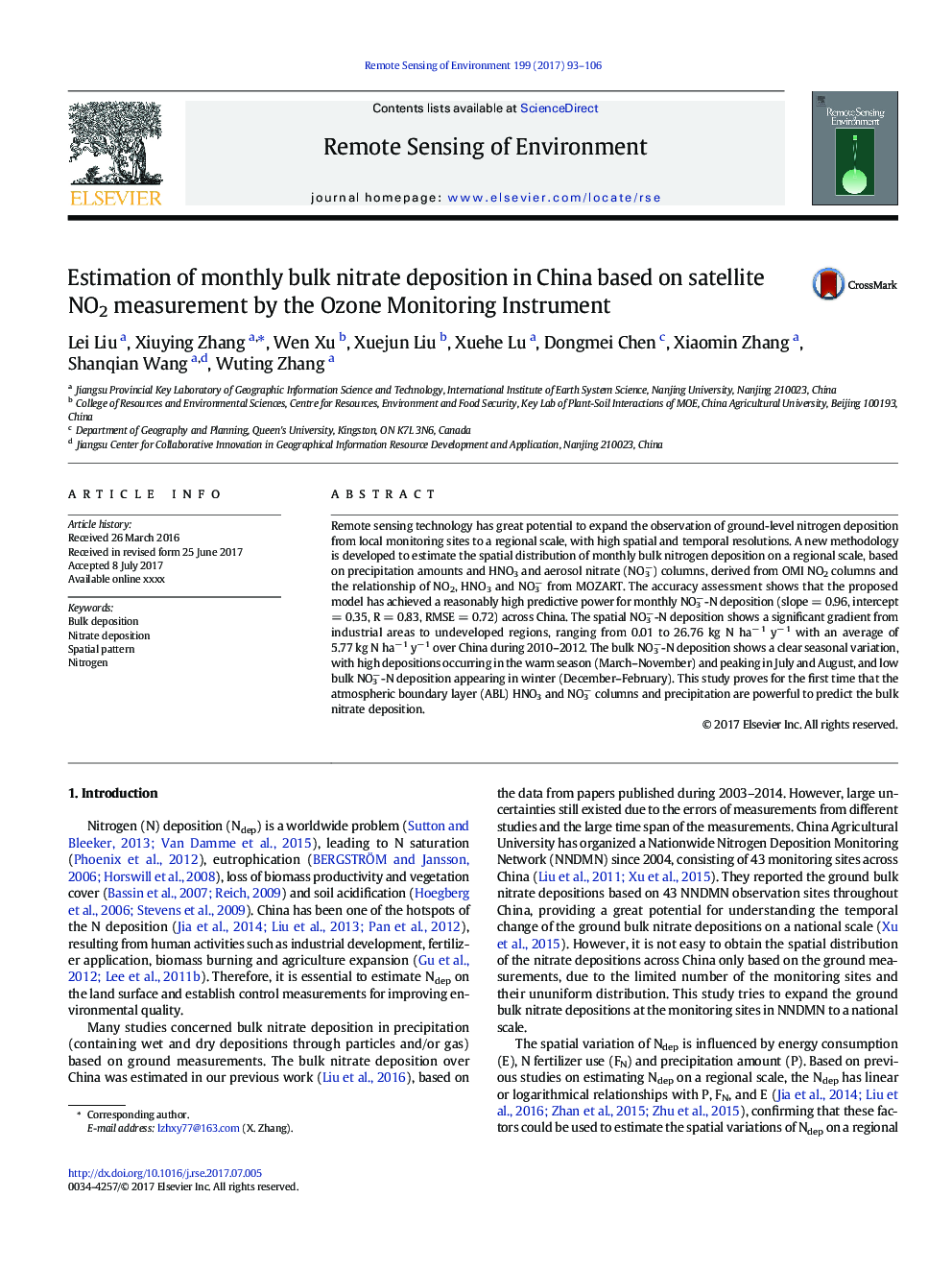| Article ID | Journal | Published Year | Pages | File Type |
|---|---|---|---|---|
| 5754835 | Remote Sensing of Environment | 2017 | 14 Pages |
Abstract
Remote sensing technology has great potential to expand the observation of ground-level nitrogen deposition from local monitoring sites to a regional scale, with high spatial and temporal resolutions. A new methodology is developed to estimate the spatial distribution of monthly bulk nitrogen deposition on a regional scale, based on precipitation amounts and HNO3 and aerosol nitrate (NO3â) columns, derived from OMI NO2 columns and the relationship of NO2, HNO3 and NO3â from MOZART. The accuracy assessment shows that the proposed model has achieved a reasonably high predictive power for monthly NO3â-N deposition (slope = 0.96, intercept = 0.35, R = 0.83, RMSE = 0.72) across China. The spatial NO3â-N deposition shows a significant gradient from industrial areas to undeveloped regions, ranging from 0.01 to 26.76 kg N haâ 1 yâ 1 with an average of 5.77 kg N haâ 1 yâ 1 over China during 2010-2012. The bulk NO3â-N deposition shows a clear seasonal variation, with high depositions occurring in the warm season (March-November) and peaking in July and August, and low bulk NO3â-N deposition appearing in winter (December-February). This study proves for the first time that the atmospheric boundary layer (ABL) HNO3 and NO3â columns and precipitation are powerful to predict the bulk nitrate deposition.
Related Topics
Physical Sciences and Engineering
Earth and Planetary Sciences
Computers in Earth Sciences
Authors
Lei Liu, Xiuying Zhang, Wen Xu, Xuejun Liu, Xuehe Lu, Dongmei Chen, Xiaomin Zhang, Shanqian Wang, Wuting Zhang,
